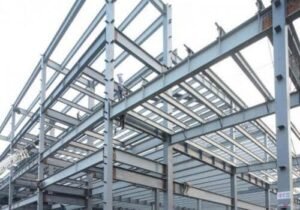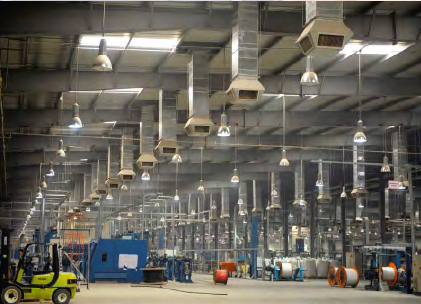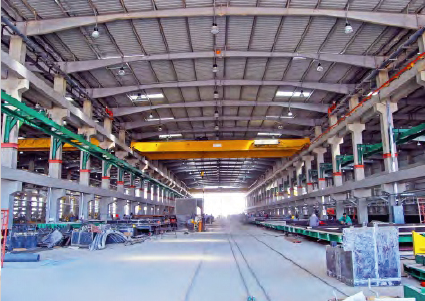Why Structural Steel Frames Are Important for Building Projects
When it comes to modern construction, structural steel frames have become a cornerstone in creating robust, safe, and efficient buildings. Whether you’re constructing a skyscraper, a bridge, or even a residential high-rise, the use of steel frames offers numerous benefits that contribute to the overall success and longevity of the project. Let’s explore why structural steel frames are so important in building projects.

1. Strength and Durability
One of the primary reasons structural steel is used in construction is its strength. Steel is a material with a high tensile strength, meaning it can withstand significant loads without breaking or bending. This makes it ideal for buildings that need to support heavy loads, such as multi-story commercial buildings, factories, and high-rise apartments.
Moreover, steel is highly resistant to many common issues that can affect other materials, such as:
- Corrosion: With proper treatment and coatings, steel can resist rust, making it durable even in challenging environmental conditions.
- Fire Resistance: Steel’s ability to withstand high temperatures makes it a safe choice for fire-resistant buildings when properly treated with fireproofing materials.
- Pest and Termite Resistance: Unlike wood, steel is impervious to termites and pests, making it an especially useful material in areas prone to infestations.
2. Speed and Efficiency in Construction
The use of steel frames speeds up the construction process, which can be crucial in meeting tight deadlines. Structural steel components are pre-fabricated off-site, meaning they can be manufactured and tested before arriving at the construction site. This reduces on-site construction time significantly.
The ease of assembly of steel components also contributes to faster erection times. Steel frames are assembled quickly with bolts or welds, meaning fewer workers and less equipment are required to complete the structure. This efficiency can lower overall project costs and allow for faster occupancy.


3. Design Flexibility and Scalability
Steel frames offer a level of design flexibility that many other materials cannot match. With steel, architects and engineers have the freedom to create open floor plans with fewer supports, enabling larger windows and uninterrupted interior spaces. This design flexibility allows for innovative architectural features, which is why steel is often used in iconic buildings around the world.
Steel’s scalability is another advantage. Whether you’re building a small office complex or a massive multi-story building, structural steel can be tailored to meet the specific demands of the project. The ability to scale and adjust the design without compromising strength is one of the reasons steel is so prevalent in modern construction.
4. Sustainability and Recyclability
Steel is one of the most recyclable materials in the construction industry. Approximately 90% of steel can be recycled without loss of strength or quality, making it an environmentally friendly choice. By choosing structural steel, construction projects can significantly reduce their environmental impact compared to non-recyclable materials like concrete or wood.
Additionally, the long lifespan of steel means that buildings made with steel frames require fewer repairs and replacements over time. This contributes to both economic and environmental sustainability.
5. Cost-Effectiveness in the Long Run
While the initial cost of structural steel may be higher compared to materials like wood or concrete, it is often more cost-effective in the long term. The durability, reduced maintenance costs, and faster construction times make steel a smart investment. Moreover, its resistance to fire, pests, and weather conditions reduces the need for repairs or replacements, ultimately saving money over the lifetime of the building.
Furthermore, because steel frames can support large open spaces without the need for additional load-bearing walls, it allows for more efficient use of space. This can translate into greater usable square footage for tenants or owners, enhancing the value of the building.
6. Enhanced Safety
Safety is a top priority on any construction site, and structural steel plays a critical role in ensuring a safe building process. Steel frames are strong and reliable, which reduces the risk of structural failure during construction. The quick assembly and predictable nature of steel also reduce the chances of construction delays and accidents, which are more common with less predictable materials.
Once completed, buildings with steel frames are also safer for the people inside. Steel frames are capable of withstanding seismic activity and extreme weather conditions (like hurricanes and tornadoes) better than many traditional materials. This makes them an excellent choice for areas prone to natural disasters.
7. Increased Building Lifespan
Thanks to its strength, resilience, and resistance to environmental factors, structural steel contributes to the overall lifespan of a building. A steel-framed building requires minimal upkeep and can easily last for decades, even in challenging conditions. This is particularly valuable for high-traffic structures such as shopping centers, office towers, and hospitals, where reliability is critical.
Conclusion : Structural steel frames are a fundamental part of modern building projects. Their unmatched strength, design flexibility, sustainability, and cost-effectiveness make them an indispensable choice for architects, engineers, and developers. Whether it’s a high-rise office building, an industrial complex, or a residential skyscraper, steel frames offer long-term value and superior performance in nearly every type of construction.
If you’re involved in a building project, choosing structural steel could be the key to ensuring a durable, safe, and efficient structure that stands the test of time. The future of construction is, without a doubt, a steel one.


